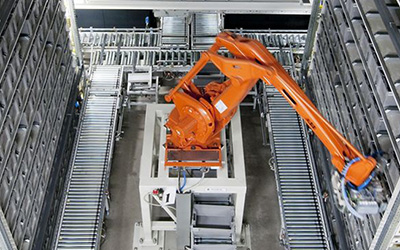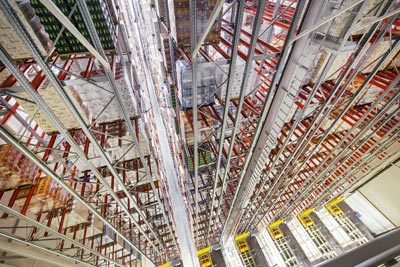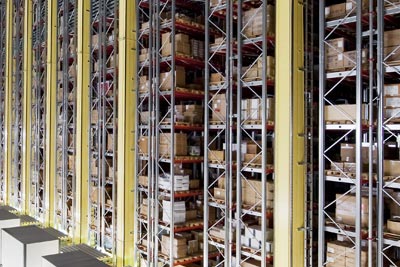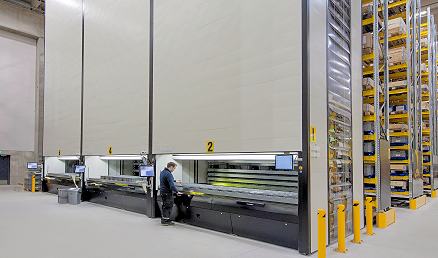 Of course, as many company’s state, people are their biggest asset. However, in these competitive times, they can also be their biggest cost. Add in the fact that the needs, wants, desires and expectations both of employees and customers have grown beyond recognition, and it becomes clear that our approach needs to evolve.
Of course, as many company’s state, people are their biggest asset. However, in these competitive times, they can also be their biggest cost. Add in the fact that the needs, wants, desires and expectations both of employees and customers have grown beyond recognition, and it becomes clear that our approach needs to evolve.
Automation in warehousing has moved up the agenda in recent years for a number of reasons: changing demographics in the labour market have increased labour costs, the changing ways in which customers are shopping and the ever present need for more efficiency, productivity and overall cost reduction.
However, any investment in a storage solution – whether or not it is automated - requires careful consideration. Before any steps are taken, it is important to work out what the best storage solution is, and whether or not an automated warehouse is the most appropriate way forward. In this way, costly mistakes are avoided and your business can achieve the optimum return on investment.
What is an automated warehouse
When we talk about an automated warehouse, we are referring to a system that doesn’t rely on people. A storage solution is installed in a warehouse in which the entire operation, including stocking and stock selection, is done via automation and programmed by software.
 There are many notable advantages to having an automated warehouse. These include:
There are many notable advantages to having an automated warehouse. These include:
- reduced labour costs
- reduced energy bills, as they can operate in low level lighting
- efficiency, as an automated warehouse can operate 24 hours per day
- lower maintenance
- elimination of risk of damage from forklifts, which occurs in manual warehousing operations
- reduced risks of accidents, due to the absence of people
- high density storage, as an automated warehouse allows for storage at a greater height.
An automated warehouse is particularly well-suited to locations where labour and land costs are high. An automated warehouse can have a small footprint, but make up for this with greater height, so reducing the amount of land being occupied.
Should you invest in an automated warehouse?
As we have seen, there are many advantages to an automated warehouse, but that does not automatically mean this is the right option for your business.
Here are a few questions to ask yourself:
Will I achieve my return on investment?
An automated warehouse can represent a significant outlay, but – can save costs on land purchase and, in the longer term, wage and energy bills. Will your operation be able to recoup the cost? This is something you will need to determine
 How will an automated warehouse affect your workforce?
How will an automated warehouse affect your workforce?
If you already have a warehouse and are considering making it automated, then you need to consider the impact this will have on your staff and others in the business.
Can I convert my existing warehouse?
This is an important question, because not all warehouses will be suitable to accommodate automation. Similarly, the cost of conversion may be prohibitive. Therefore, before making a decision, take into account the available space, layout, existing racking, desired result, costs involved and any other requirements the new solutions may have.
Can I afford to switch to automation?
There are two elements to this question. The first relates to the return on investment, as outlined above. Secondly, you should factor in potential downtime while you switch across. Can your business sustain a loss of income while you turn off one storage solution and switch to an automated solution? Again, this needs careful consideration.
Could semi-automation be the solution?
Many companies are taking a wait and see approach before diving headlong into investing in a fully automated environment. In the meantime, they are also making use of semi-automated solutions, which are designed to reduce some of the most labour intensive tasks, such as order picking.
 Examples of these include Pallet Shuttle Systems, which increase storage capacity, save time and reduce operating costs. Likewise, Mobile Pallet Racking systems, which have a guaranteed operational safety at temperatures as low as -30°C and can carry bay loads of up to 24 tons at racking heights of up to 12 metres.
Examples of these include Pallet Shuttle Systems, which increase storage capacity, save time and reduce operating costs. Likewise, Mobile Pallet Racking systems, which have a guaranteed operational safety at temperatures as low as -30°C and can carry bay loads of up to 24 tons at racking heights of up to 12 metres.
Here are some of the advantages of semi-automation:
- It can be retrofitted to an existing facility and it has a bigger balance between people and software.
- It is a less costly investment than full automation
- Semi-automation makes better use of the space available, while maintaining the people you have.
- Semi-automation can be configured so that at some point in the future, and if necessary, you can move to a fully automated state.
In summary, an automated warehouse is a marvellous storage solution which can greatly increase efficiency while at the same time cutting costs. However, it is not the right solution for all businesses, especially when the initial investment is factored in. Automation within the logistics industry has enabled many companies to keep pace with demand, but full automation is usually more expensive.
If you would like to discuss automated warehousing for your business, or to find out information about other storage solutions that are available, please get in touch with the team. We would be happy to help.